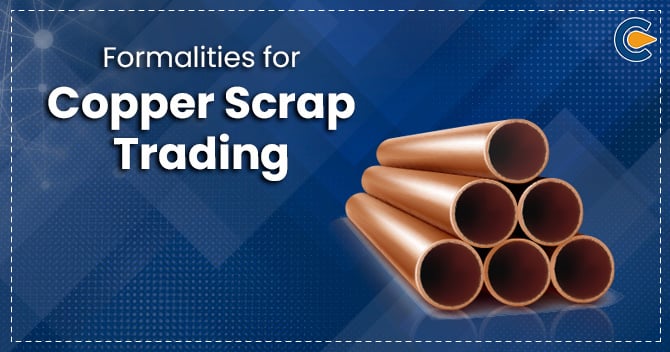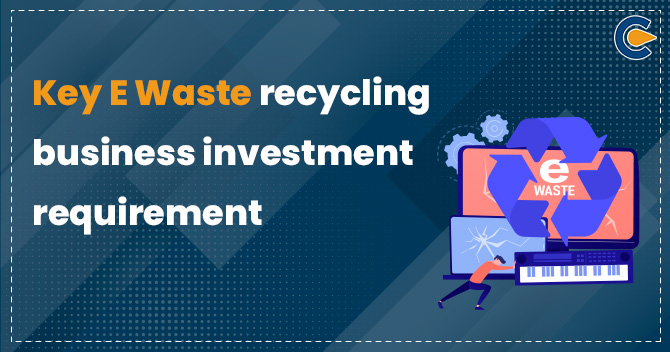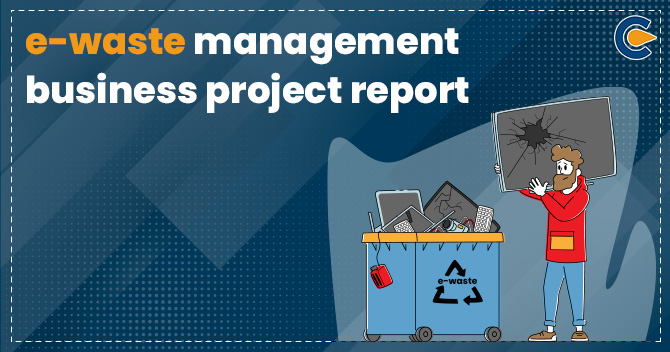Copper is the third most crucial base metal by value, accounting for roughly a $130 billion industry annually worldwide. One of the key challenges in the domestic industries has been the heavy dependence on copper scrap imports. Copper Scrap trading involves trading in copper scrap through its collection and physical separation of the metal and employing machinery to extract/reclaim the metal from the copper-containing objects/ alloys. There are two categories of copper scraps found in the Copper Scrap Trading market.
Old copper scrap: It is collected from discarded, dismantled or obsolete or end of their lives products that contain copper. For example, old copper pipes from buildings, old taps, discarded electrical cables, ship breaking, used brass cartridges, radiators, mixed railway scrap, e-waste etc. This copper scrap is categorised as old or obsolete and is obtained from materials that have ended their use. This type of scrap often needs sorting, deconstruction, and sometimes refining.
New copper scrap: It comes from factories that make articles from copper, for example, cut and unusable wires, waste from forgings, castings, and fabrication works, shavings and discards from copper sheets etc., when the machines produce offcuts and other metal waste.
Export and Import of Copper Scrap in India
India is a net exporter of copper scrap. While copper scrap exports, as well as imports, have shown a decreasing trend in the year 2020, this can be attributed to the fact that manufacturers are now given a higher priority than the traders due to the regulations from Customs authorities. Some of the top countries where India imports copper waste and scrap are the USA, Saudi Arabia, Germany, the UK, and the UAE. In 2018, the tariff in India for copper was 4.88%. It was reduced to 2.5 % in 2021. In January 2022, Assocham requested to reduce this to zero as a means to ease the formalities for copper scrap trading. For importing copper scrap for trade into India, the importer must adhere to the regulations notified by the Customs Agency.
Government’s initiative to promote the Copper Scrap Business
The Ministry of Mines in 2020 issued the National Non-Ferrous Metal Scrap Recycling Framework for scrap metal recycling to promote a formal and well-organized recycling ecosystem. Under this framework, necessary formalities for copper scrap trading like an online market platform for scrap metals like copper will be developed. This will, in turn, facilitate auctions of metal scrap, WEEE[1] and end of life machines that use copper between organisations and scrap distributors/aggregators. Metal scrap start-ups will also be facilitated under this framework.
Copper Scrap Trading in India
Mentioned below are some of the Formalities for Copper Scrap Trading in India.
Types of Copper Scraps found in the Indian Market.
The following types of scrap are usually found in the Copper Scrap Trading and can fetch returns depending on the type and purity of the scrap.
- Copper Wire Scrap
- Millberry Copper Scrap
- Copper Cable Scrap
- Copper Pipe Scrap
- Copper Sheet Scrap
- Copper Ash
- Heavy Melting Copper Scrap
- Copper Nickel Scrap
- Copper Turnings
- Nickel Copper Alloy Scrap
- Copper Cathode Scrap
- Copper Plate Scrap
Industries using scrap copper through Copper Scrap Trading
Many Industries use copper scraps in place of copper ores as it is comparatively cheaper than procuring pure copper. The following industries make use of copper scrap.
- Industries involved in the smelting process
- Refining Industries
- Hydromet Plants
- Direct melting of Copper
- Industries making Copper ingots
How to start Copper Scrap Trading
Like any other metal scrap trading business, copper scrap trading involves the following pre-production steps.
Thorough market research: Identifying the source of scrap and the collector’s demand for the scrap, scrap copper prices in different sectors of the market, the cost involved in transportation etc., can be some of the factors that need proper research before deciding to enter into copper scrap business.
Learning deconstruction techniques: using deconstruction techniques to obtain the copper from scrap is an essential part of formalities for Copper Scrap Trading. For instance, extracting copper from waste electrical and electronic equipment (WEEE), tangled and discarded old power cables, old transformers, motors and other electrical equipment needs cost efficient deconstruction techniques to extract copper made components. A profitable way of deconstruction is one of the key formalities for copper scrap trading and can require skilled labour and machinery.
Machinery: Generally, copper scrap comes as discarded copper coils of the motor and used wires. Discarded wires have to be stripped of the insulation coating by using copper wire recycling machines that can shred and crush separating copper and insulation plastic/rubber from the mix. An electrostatic separator which works on the principle of differential attraction and repulsion of ions can be used to separate the remaining copper from the plastic.
Space and location of the Unit: a scrap business would need a spacious place to set up the business as storage of scrap needs space. Along with that, proximity to the collection points will mean lesser expenses on transportation, thereby achieving the transportation formalities for copper scrap trading.
Certification by the Governmental Agencies: Although copper is not a hazardous substance, recycling the metal from e-waste and electric wires involves processing the scrap through machines such as an oil-fired furnace. A trader needs to obtain the necessary certification and consent from the SPCB/PCC as formalities for copper scrap trading.
Conclusion
Market studies have proven that it is cheaper to recycle copper than to mine and extract new copper. Recycled copper is worth up to 90% of the cost of the original copper. Recycling helps to keep the cost of copper products down as Recycling copper uses 15 % of the energy that would be used to mine and extract the same copper. India might capitalise on these stringent restrictions and allow imports of secondary materials with lower metallic content and simplify existing formalities for copper scrap trading. The Make in India Initiative of the government has also led to the growth of specific industries like Electric vehicles and its supporting infrastructure, which heavily relies on the use of copper. The reduction of import duty on copper scrap will help units involved in copper scrap trading in the country.
Read our Article:Draft of E-waste Management Rules











